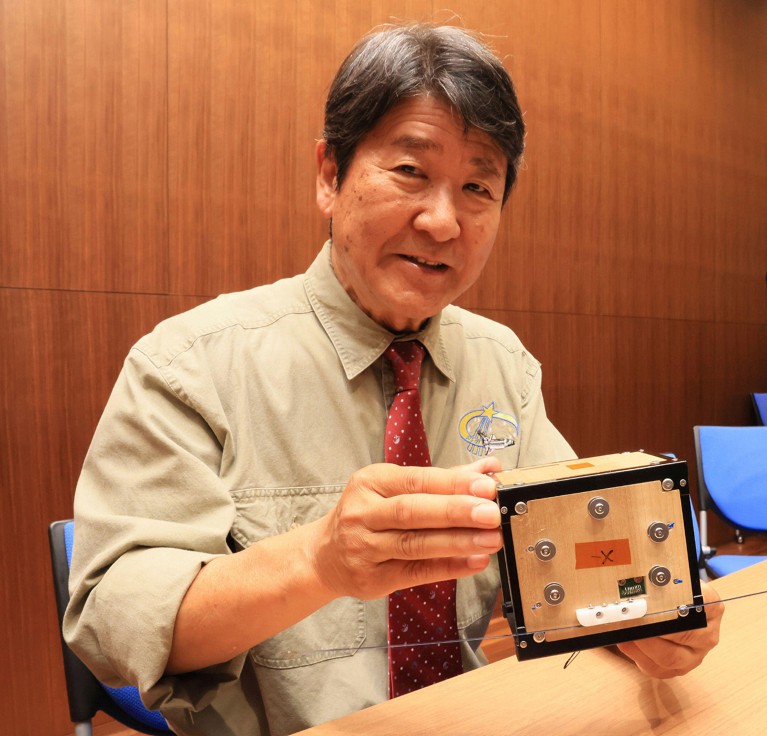
In an experiment to test the durability of the material, the world's first wooden satellite, developed by Japanese researchers, has been sent to space. Created by researchers from Kyoto University in collaboration with Sumitomo Forestry, the wooden satellite is called "LingoSat," derived from the Latin word for wood.
The wooden satellite was transported to the International Space Station (ISS) on a SpaceX mission and later released in orbit 400 kilometers (250 miles) above the Earth to test how it behaves in space conditions. The LingoSat, a palm-sized satellite, was developed using timber wood.
Takao Doi, an astronaut who has flown on the Space Shuttle and studies human space activities at Kyoto University, said, "With timber, a material we can produce by ourselves, we will be able to build houses, live and work in space forever." He further added that since "Metal satellites might be banned in the future if we can prove our first wooden satellite works, we want to pitch it to Elon Musk’s SpaceX."

The milestone marks the first step in the 50-year plan of planting trees and building timber houses and spaces on the Moon and even on Mars. Discussing the feasibility of a wooden satellite, Kyoto University forest science professor Koji Murata said, "Early 1900s airplanes were made of wood. A wooden satellite should be feasible, too."
The two main reasons for sending a wooden satellite to space are, first, to test the durability of wood when put against the harsh conditions of space. If the results are positive, then researchers will get a nod to build wooden structures for space missions.

Second, a wooden satellite minimizes the environmental impact when it reaches the end of its life. Decommissioned satellites are required to re-enter the atmosphere to avoid becoming space debris. Metal satellites produce aluminum oxide when they re-enter the atmosphere, while wooden satellites just burn up and vanish. Given the large number of satellites orbiting the Earth, wooden satellites could significantly help reduce space debris.
Source: CNN
Hope you enjoyed this news post.
Thank you for appreciating my time and effort posting news every day for many years.
2023: Over 5,800 news posts | 2024 (till end of October): 4,832 news posts
RIP Matrix | Farewell my friend ![]()
- Melgas
-

 1
1



3175x175(CURRENT).thumb.jpg.b05acc060982b36f5891ba728e6d953c.jpg)
Recommended Comments
There are no comments to display.
Join the conversation
You can post now and register later. If you have an account, sign in now to post with your account.
Note: Your post will require moderator approval before it will be visible.